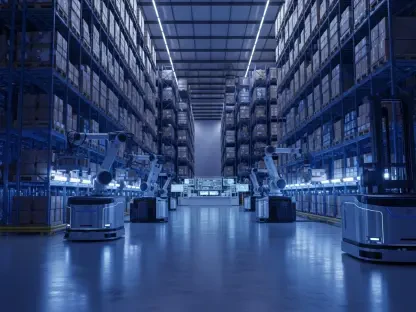The monthly jobs report has sparked a lively debate among economists and industry leaders, revealing a surprising increase of 177,000 new jobs, surpassing early projections by a significant margin. This surge has occurred despite concerns over tariffs and their potential impact on the broader economy. As analysts grapple with these numbers and their implications, they must also consider whether tariffs could threaten these gains over the coming years.
Understanding April’s Employment Surge
April’s job growth offers a refreshing, if unexpected, boost for the U.S. economy, maintaining a stable unemployment rate of 4.2%. Economists are optimistic as this growth rate stands out amidst looming challenges posed by tariffs and trade tensions. It underscores resilience in key industries such as healthcare, transportation, and financial activities.
Adding a layer of complexity to the discussion is the unchanged unemployment rate coupled with a 3.8% rise in average hourly earnings. Such earnings growth is vital in an economy often characterized by wage stagnation. The nuances of these findings call for a deeper analysis of how the interplay between tariffs and job growth might shape the future economic landscape.
The Immediate Impact of Tariffs on Employment
Navigating Economic Uncertainties: Short-term Effects
In the short term, tariffs have undoubtedly altered hiring practices within sectors like manufacturing and agriculture, with direct impacts already evident. Some experts note a correlation between increased tariffs and restrained job openings, signaling a cautious employer approach that could stifle further growth. These observations underscore the debate on whether tariffs serve as protective economic measures or present substantial risks to immediate economic stimulation.
Contrary to optimistic viewpoints, there exists a school of thought portraying tariffs as formidable barriers to employment stability. Analysis reveals how tariff escalations might temper company eagerness to recruit, potentially leading to a gradual cooling of job markets once buoyant with opportunity.
The Long-term Employment Landscape: Challenges Ahead
Looking forward, sustained tariffs may challenge various industries, compelling businesses to rethink their long-term strategies. Industry leaders have shared instances where companies were forced to pivot strategically, adjusting to new, often stringent trade policies. These shifts provide insight into both the challenges and opportunities emerging from such economic shifts.
While businesses grapple with tariffs’ longer-term effects, innovative adaptation holds promise for those capable of agile responses. Navigating the job market requires not only managing risks inherent in trade policies but also capitalizing on unique opportunities that these changes can illuminate.
Exploring New Frontiers in Workforce Dynamics
As companies adjust to evolving tariff dimensions, new labor trends are unfolding. Regional disparities and varied industry impacts become pronounced as employers adopt different strategic approaches. Some sectors may suffer more immediate setbacks, whereas others could uncover hidden potential by initiating innovative changes in workforce strategy.
The discussion extends beyond labeling tariffs solely as economic barriers. There’s a compelling case for viewing them as potential catalysts for innovation in workforce dynamics, inspiring businesses to rethink their traditional operations and develop adaptive strategies.
A Closer Look at Alternatives and Adaptive Strategies
Considering alternative trade strategies emerges as a critical focus for businesses aiming to mitigate tariff impacts. Experts emphasize the importance of strategic shifts within the global trade landscape to accommodate and anticipate these changes. Comparing and contrasting expert insights reveals diverse perspectives on how best to navigate future developments within this complex ecosystem.
Anticipation of future developments allows for better employment adaptability, enabling companies to remain resilient in the face of potential global trade fluctuations. Strategies will likely evolve as industry experts seek balanced approaches to navigate tariffs’ challenges while safeguarding employment stability.
Synthesizing Insights and Strategic Recommendations
Analyzing the nuanced relationship between tariffs and job growth reveals a complex weave of challenges and opportunities. At the heart of current discussions lies the question of how businesses can equip themselves with practical strategies amid these economic hurdles. Implementing adaptive workforce management approaches positions companies to weather uncertainty effectively.
For workforce stability to prevail, industry leaders advocate for a proactive stance, enabling businesses to leverage changes in global trade landscapes while minimizing adverse effects. The rich interplay between evolving tariffs and the job market necessitates strategic foresight and flexibility in workforce planning.
Looking Forward: The Continuing Relevance of Tariffs in Employment Trends
In contemplating the future, understanding tariffs’ pivotal role in shaping economic trajectories becomes increasingly important. The potential scenarios resulting from persistent or intensified tariffs require careful examination as they may profoundly influence employment trends. While this inquiry into the effects of tariffs unfolds, remaining attuned to changes within the economic environment is paramount.
As stakeholders explore these multifaceted dynamics, focusing on strategic implications and proactive resilience will illuminate pathways forward. The insights gleaned from analyzing these fluctuations provide valuable context, encouraging stakeholders to consider new directions that may enhance workforce adaptability and economic robustness.









